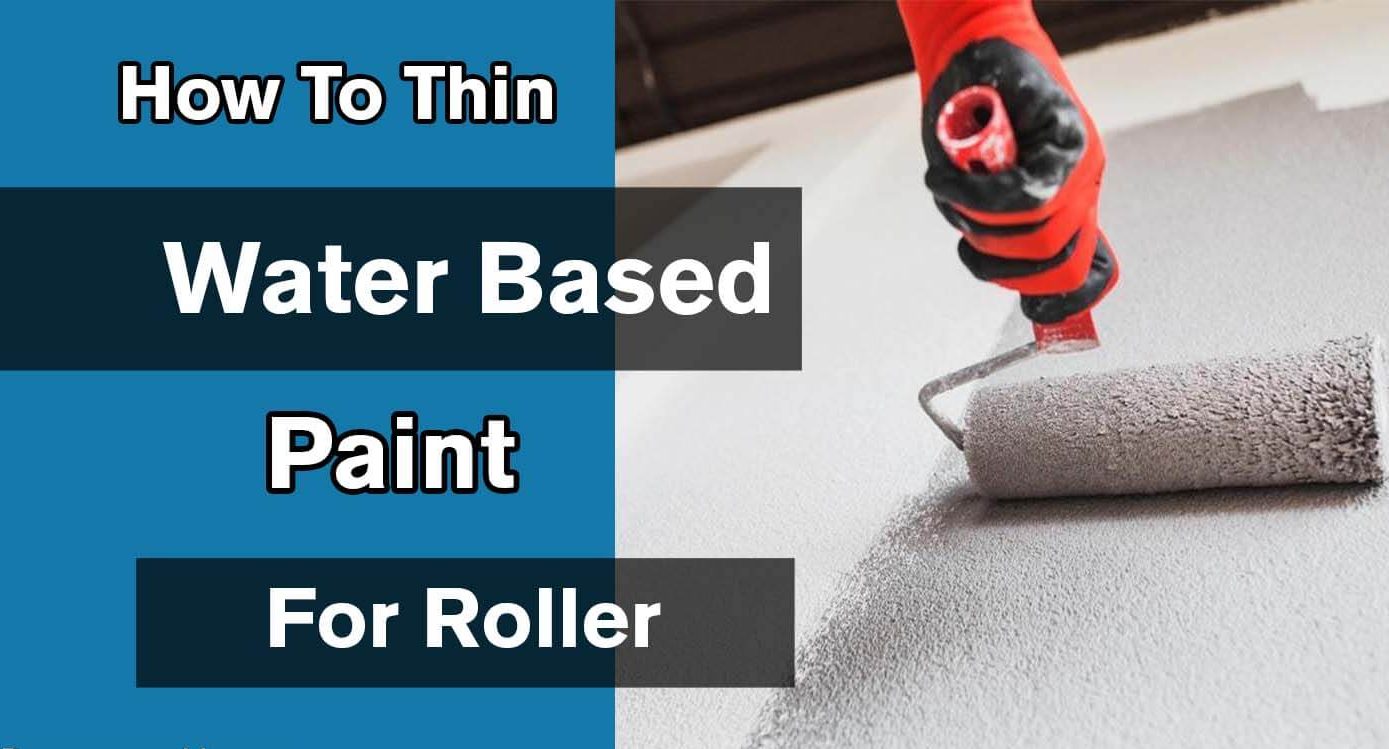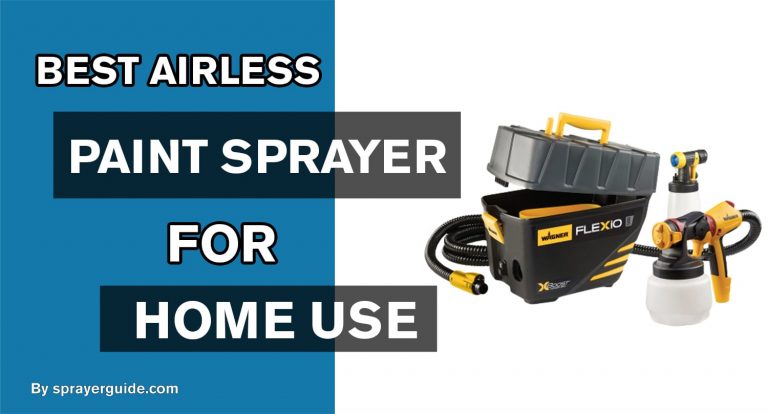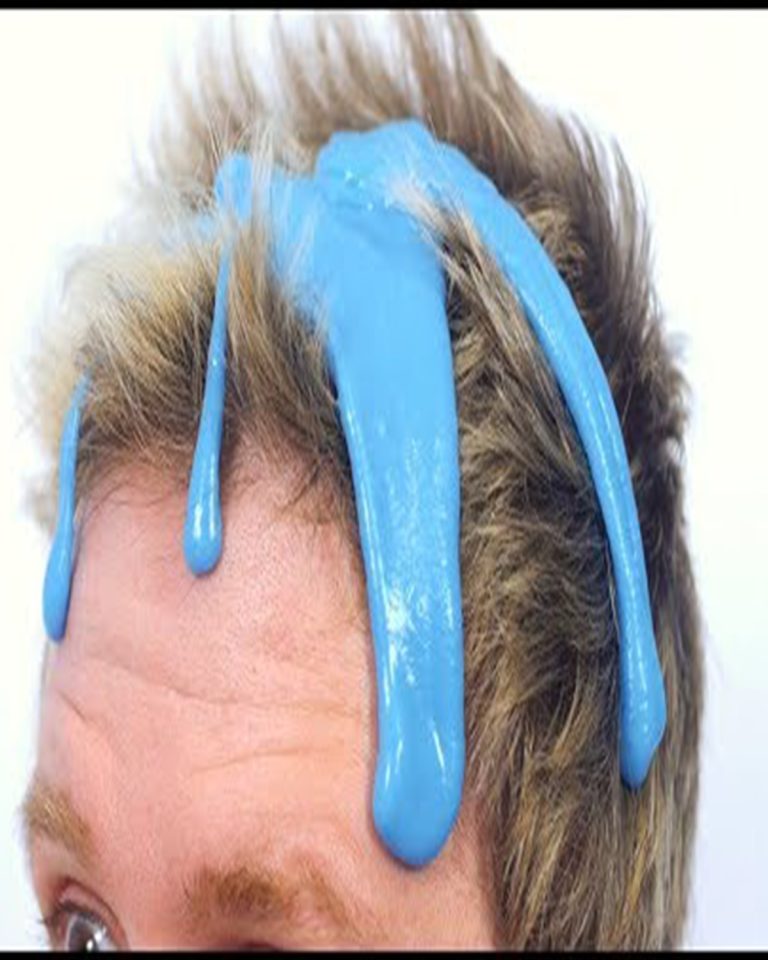Do you want to know how to thin water-based paint and which roller is best for the job? It’s uncomfortable when diluted paint doesn’t dry as smoothly as you’d like. You can ensure the success of your next painting project by following a few simple steps. This blog post will review how to thin water-based paints to cover well and look professional. Continue reading to learn more!

What is Water-Based Paint?
Water-based paint is a type of paint that uses water as the primary solvent in preparation and application. It is an eco-friendly alternative to solvent-based paints, often using chemicals such as volatile organic compounds (VOCs) as solvents. Water-based paints are typically easier to clean up, have less odor, and dry faster than traditional solvent-based paints. They are also more environmentally friendly and less hazardous since the paint does not emit VOCs into the air during or after application. Water-based paints can be used on interior and exterior surfaces and come in various finishes, including matt, eggshell, satinwood, gloss, and silk. They are available in multiple colors and styles to suit any project. Water-based paints have become increasingly popular among homeowners due to their versatility and environmental benefits.
How To Thin Water-Based Paint For Roller
You will need a few tools and materials to thin water-based paint for roller application.
Necessary items Required:
- Paint thinner
- Stirring stick
- Measuring cup
- Bucket
- Roller frame with roller cover on it
Instructions:
- Pour the desired amount of paint into a bucket and add an equal amount of paint thinner according to the manufacturer’s instructions.
- Mix well using the stirring stick until all the lumps are gone and uniform consistency is achieved.
- Measure out a sample of your mixture using the measuring cup, making sure to observe how thick or thin it is before transferring it into your roller frame.
- Roll the mixture onto a wall in small patches and assess its coverage; if necessary, adjust your ratio until you achieve satisfactory results.
- When you’re done, clean the roller’s frame and cover before you put it away.
These simple steps will ensure that your paint job is smooth and even, without any streaks or runs. By providing the correct ratio of paint to thinner, you can ensure that your result looks professional and lasts a long time. With this technique, using less paint, you can save costs, as a thinner mixture will cover more area. Remember that different brands or thinners may require different ratios, so read the instructions closely before starting!
Benefits of Water-Based Paints
Environmental Friendliness:
Water-based paints are environmentally friendly and non-toxic, making them a much safer option for homeowners and the environment than oil-based paints. The solvents used in water-based paint formulas are also biodegradable, eliminating the need to dispose of hazardous materials.
Improved Air Quality:
When you paint with water-based paints, less volatile organic compounds (VOCs) are released into the air. This helps improve the air quality inside. Because VOCs can cause breathing problems like asthma and allergies, it is important to use paints with low or no VOCs to make living spaces healthier.
Quick Drying Time:
Water-based paints dry much faster than oil-based paints. As a result, they are ideal for large projects that must be completed quickly.
Easy Cleanup:
Paints made with water can be cleaned with soap and warm water. Because they do not require strong solvents like oil-based paints, they can be cleaned up quickly before the paint sets or dries.
Versatility:
Water-based paints can be used on various surfaces, making them incredibly versatile and helpful in any painting job. They can also be formulated into different sheens, from glossy and high-gloss to flat and satin finishes.
Odorless:
Unlike oil-based paints, water-based paint formulas have no strong chemical odors. This makes them much easier to use indoors without worrying about the lingering smell of paint fumes.
Durability:
Despite their fast drying time, water-based paints are durable and long-lasting. They also don’t yellow or fade over time as oil-based paints can.
Cost Effective:
Water-based paints are generally cheaper than oil-based paints and require less prepping for application due to their quick drying time and easy cleanup process. They also provide better coverage per gallon than oil-based paints, making them even more cost-effective in the long run.
Low-Temperature Application:
Water-based paints can be applied in temperatures as low as 35°F, making them perfect for outdoor projects during colder months.
Variety of Colors:
Water-based paint comes in many colors and finishes for many projects. They also do a great job of coloring, making it easy to get the shade you want. Because of these pros, water-based paints are the best choice for any painting project. Water-based paints are safe, last a long time, and are inexpensive. They can be used both inside and outside. Also, they don’t put your health at risk because they don’t have dangerous VOCs as other paints do. With so many benefits, it’s no wonder that paints made with water are becoming more popular.
What Do You Need to Know Before Buying Water-Based Paint?
You could try using water-soluble paint. They are simple to use, long-lasting, and environmentally friendly. They are available in various colors and finishes and can be used for indoor and outdoor projects. Before buying water-based paint, you should know the most important factors that will influence your decision.
- First, you’ll need to determine the surface area you plan on painting. The size of the surface will influence how much paint you’ll need, as well as the type of finish or sheen desired. You may also need to consider if special coatings, such as primer or sealant, are required beforehand.
- Next, select the appropriate roller or paintbrush for the job. The applicator you use will also determine your desired surface and finish.
- Finally, before you begin your project, read the instructions on the paint can. This will help you learn how to paint correctly and achieve the best results.
Water-based paints are ideal for a variety of painting projects. By keeping these factors in mind, you can be certain of selecting the best product for your needs.
What to Do Before Using Any Paint?
Before beginning any painting project, properly preparing the area and materials is essential. Doing so will help ensure the job is done right and make it less likely that you’ll have to do any repairs or re-painting down the road.
- The first step in prepping for a paint job is to clean the surface that needs to be painted. This involves removing dust, dirt, grease, and other particles from the walls with a damp cloth or vacuum cleaner. It’s also vital to repair any cracks or holes in the wall before painting begins, as this can lead to an uneven finish when applying paint.
- Once the surface has been cleaned and repaired, select a primer to give your paint an even base for application. This is especially important when painting over a dark color or covering up an old paint job. Priming will help the paint stick better, last longer, and create an even finish.
- It’s also important to consider ventilation if you’re using oil-based paints or solvents, as these can produce high levels of fumes that can be dangerous. It’s best to paint in a well-ventilated area and use a fan to keep air circulating throughout the room.
- Finally, ensure you have all the necessary tools and supplies before starting your project. These include drop cloths, painter’s tape, brushes, rollers, stir sticks, and mixing containers. Having everything ready ahead of time will make the painting process easier and help you avoid any unnecessary trips to the store.
If you do these things, you’ll be off to a great start on your painting project. Take your time and prepare the area thoroughly before beginning to paint.
Frequently Asked Questions:
Most water-based paints can be diluted. However, consult the manufacturer’s instructions if you want to thin a specific brand or type of paint.
Water-based paints are designed to dry quickly and evenly without needing additional assistance. However, in some cases, such as when painting a large surface with a roller, thinning the paint may help prevent streaks or give you better coverage.
The amount of thinner to use is determined by the type and brand of paint. Generally, start with 1 part water to 10 parts paint and adjust as needed to achieve the desired consistency.
The best option is to drink plain water. To thin the paint, you can also use Floetrol or Penetrol. Add items in the order specified by the creator.
A good way to see if your paint is thin enough is to run a few drops down an incline (e.g., a piece of cardboard). Paint should be spread quickly and evenly, without bubbles or streaks.
Once you have thinned the paint, it can be used with a roller or brush. Be sure to apply the paint in even strokes, brushing in one direction only. This will help ensure that your finished product is smooth and even.
Conclusion:
In Conclusion, thinning water-based paint for a roller is essential to achieving a smooth and even finish. Begin by stirring the paint thoroughly, then add small amounts of plain water until desired consistency is reached. Always use clean containers, tools, and water when thinning paint. Lastly, don’t forget to test your paint on an inconspicuous area before beginning work to ensure everything works correctly. With these tips, you can be confident in your project and achieve great results with every coat.
Read More:
- How Long Does Primer Spray Paint Take To Dry
- How To Spray Paint Wood Chairs
- How To Thin Water-Based Paint For Roller
- How Long Does Spray Paint Take To Dry Metal
- Is It Better To Spray Or Roll the Interior Paint
- Does A Paint Sprayer Use More Paint Than A Roller
- How To Thin Water-Based Paint For Spraying
- How To Clean Wagner 350 Paint Sprayer
- How To Paint A Textured Ceiling With A Roller
- Which Is Better, Air Or Airless Paint Sprayer
- How To Use Hvlp Spray Gun
- How Long Does Spray Paint Take To Dry On Cardboard
- Graco Magnum Prox17 VS X5






